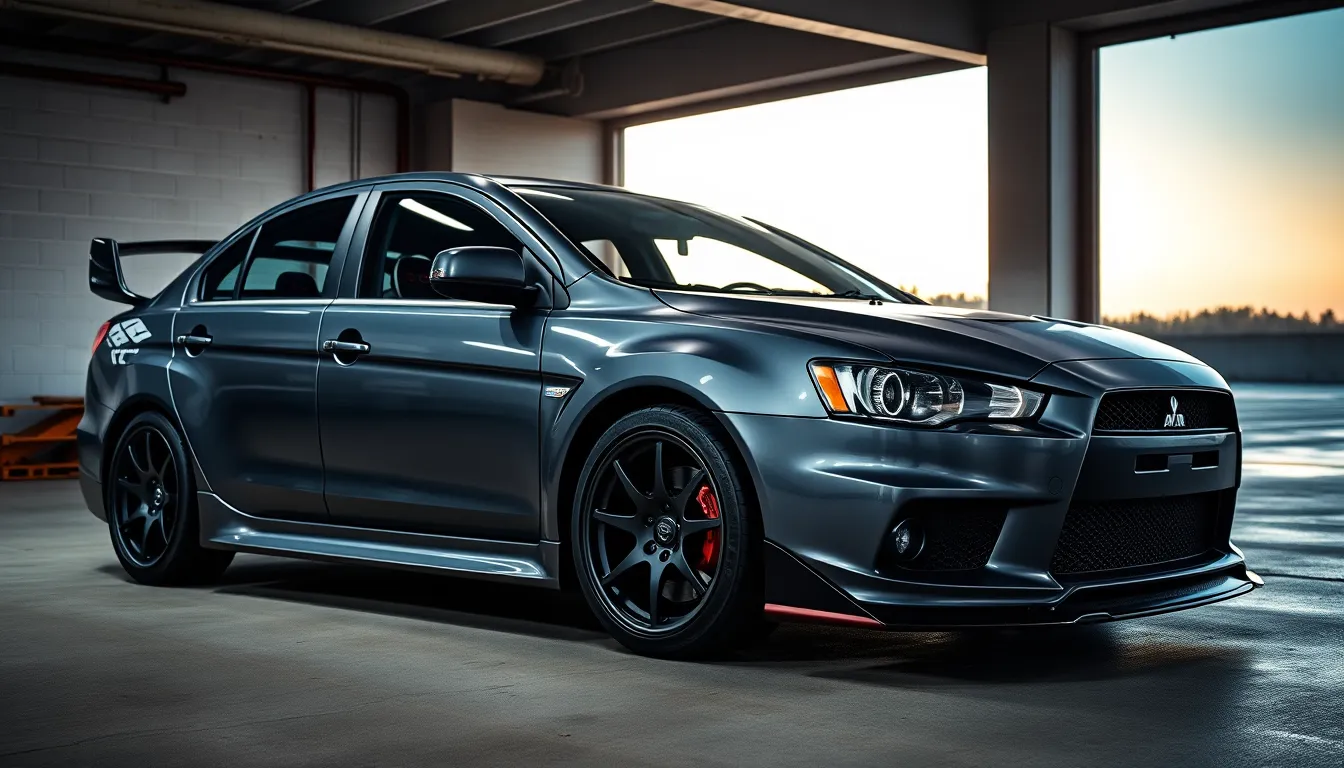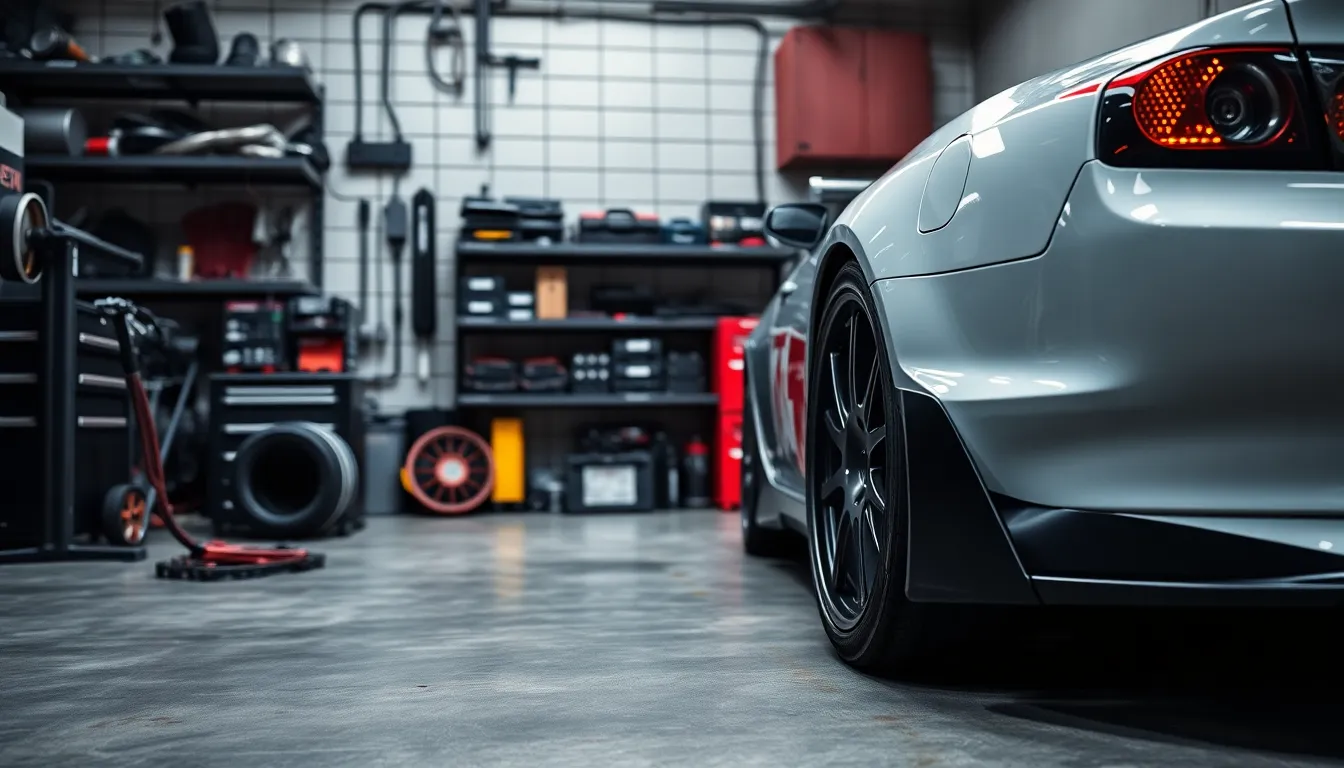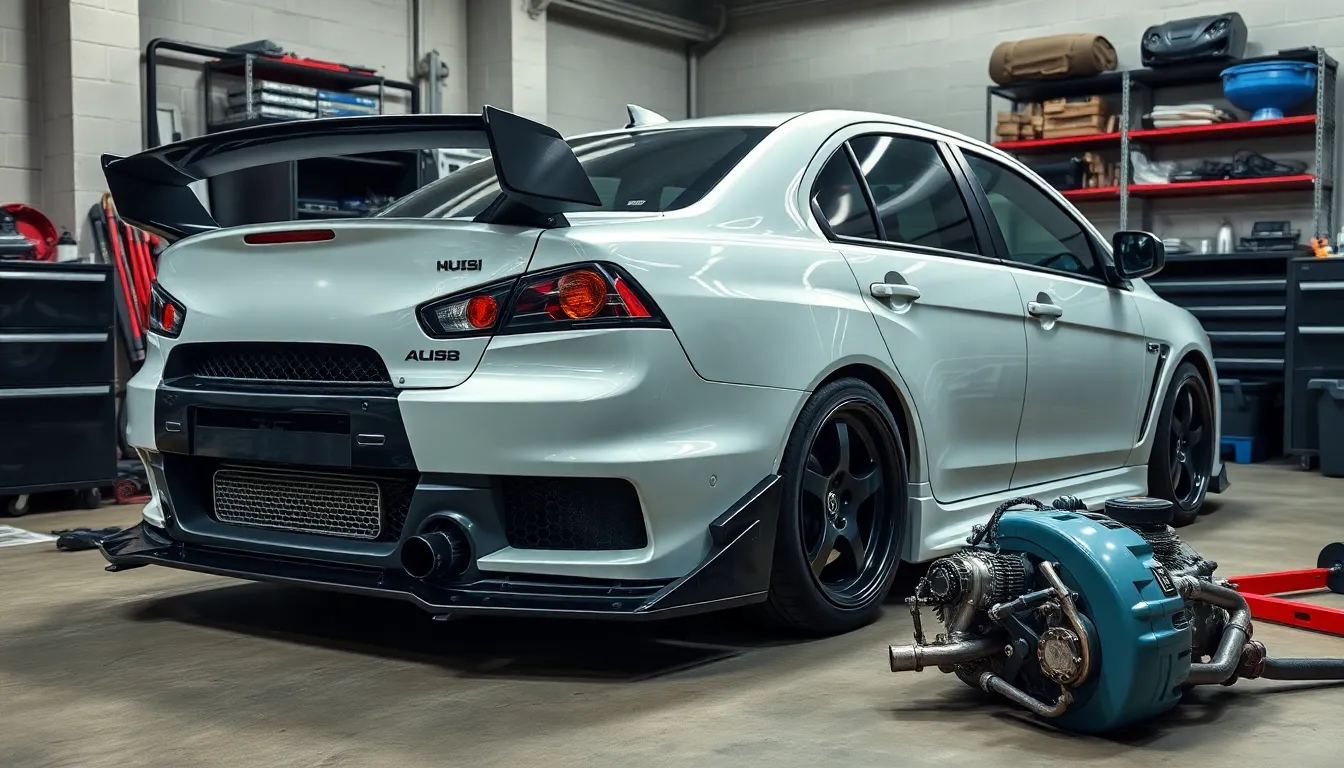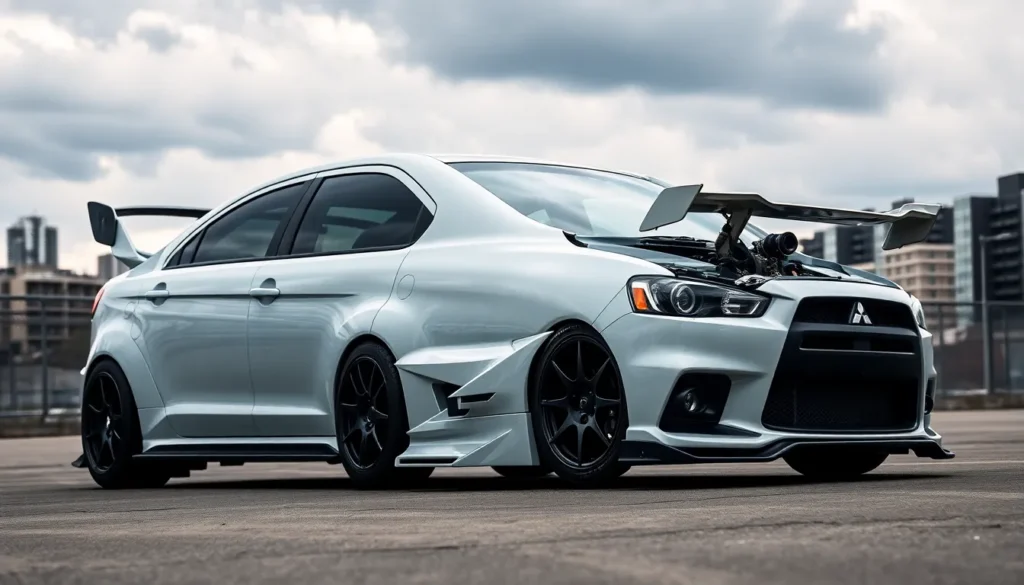The Mitsubishi Lancer has earned its place as one of the most beloved platforms in the tuning industry. Whether you’re working with a base model Lancer or the legendary Evolution variant, this compact sedan offers incredible potential for performance modifications that’ll transform your daily driver into a track-ready beast.
We’ve spent countless hours exploring the endless possibilities that Lancer tuning presents. From simple bolt-on modifications that boost horsepower to comprehensive engine builds that push the limits of the 4G63 and 4B11 engines, there’s a modification path for every budget and skill level.
What makes Lancer tuning so appealing isn’t just the performance gains – it’s the supportive community and abundant aftermarket support. With decades of proven modifications and a wealth of knowledge shared among enthusiasts, you’ll find that building your dream Lancer is more achievable than you might think.
Understanding the Mitsubishi Lancer Platform
Mitsubishi’s Lancer platform provides tuners with multiple pathways for performance enhancement across its model variants. Different generations and trim levels offer distinct advantages for various tuning approaches and budget considerations.
Lancer Evolution vs. Standard Lancer Models
Lancer Evolution models feature turbocharged engines, all-wheel drive systems, and reinforced chassis components designed for high-performance applications. Evolution variants (Evo VIII, IX, X) include the legendary 4G63T engine in earlier generations and the 4B11T in later models, delivering factory outputs ranging from 271 to 291 horsepower. These models incorporate Brembo brakes, sport-tuned suspensions, and aerodynamic body kits as standard equipment.
Standard Lancer models use naturally aspirated engines like the 2.0L 4B11 or 2.4L 4B12, producing between 148 and 168 horsepower from the factory. Base models feature front-wheel drive configurations with less aggressive suspension tuning and standard brake systems. Ralliart variants bridge the gap between standard and Evolution models, offering turbocharged engines with all-wheel drive but less extreme performance-focused components.
Cost differences between platforms significantly impact tuning budgets, with Evolution models commanding $15,000-$35,000 in the used market compared to $8,000-$15,000 for standard variants. Evolution models provide stronger internals and supporting modifications from the factory, reducing initial investment requirements for serious performance builds.
Engine Specifications and Potential
The 4G63T engine in Evolution VIII and IX models handles 400-500 wheel horsepower on stock internals with proper tuning and supporting modifications. Internal components include forged pistons, strong connecting rods, and a robust crankshaft capable of withstanding important power increases. Turbocharger upgrades, fuel system enhancements, and engine management modifications unlock substantial performance gains on this platform.
Evolution X’s 4B11T engine features aluminum construction with MIVEC variable valve timing, producing different tuning characteristics compared to its iron-block predecessor. Stock internals typically support 350-400 wheel horsepower with appropriate modifications, though the aluminum block requires more careful heat management during high-performance applications.
Standard Lancer engines offer different tuning approaches focused on naturally aspirated modifications or forced induction conversions. The 4B11 naturally aspirated engine responds well to intake, exhaust, and ECU modifications for modest power gains of 15-25 horsepower. Turbocharger or supercharger installations on these engines require extensive supporting modifications including fuel system upgrades, engine management changes, and internal reinforcements.
| Engine Code | Displacement | Factory Power | Tuning Potential | Platform |
|---|---|---|---|---|
| 4G63T | 2.0L | 271-291 hp | 400-500 whp | Evo VIII/IX |
| 4B11T | 2.0L | 291 hp | 350-400 whp | Evo X |
| 4B11 | 2.0L | 148 hp | 180-200 hp NA | Standard Lancer |
| 4B12 | 2.4L | 168 hp | 200-220 hp NA | Standard Lancer |
Popular Engine Modifications

Popular engine modifications for Mitsubishi Lancers focus on maximizing the potential of both naturally aspirated and turbocharged powerplants. These upgrades transform stock engines into high-performance machines capable of delivering substantial power gains.
Turbocharger Upgrades and Installation
Turbocharger upgrades represent the most effective modification for Evolution models equipped with factory turbo systems. Stock turbos on 4G63T engines typically produce 280-300 horsepower but upgrading to larger units like Garrett GT2860RS or Precision 5857 turbos increases output to 400-500+ horsepower.
Installation of aftermarket turbos requires supporting modifications including upgraded fuel injectors, fuel pumps, and intercoolers. Garrett Motion turbos offer excellent response characteristics while maintaining reliability for daily driving applications. Precision Turbo units excel in high-power builds where maximum output takes priority over spool characteristics.
Naturally aspirated Lancers benefit significantly from turbo conversions using complete kits from companies like Road Race Engineering or custom setups. These conversions typically add 100-150 horsepower to stock 4G63 or 4B11 engines when properly tuned with appropriate supporting modifications.
Cold Air Intake Systems
Cold air intake systems improve engine breathing by replacing restrictive factory airboxes with high-flow alternatives. Quality intakes from AEM, Injen, or K&N increase airflow by 15-25% while reducing intake air temperatures by 10-20 degrees Fahrenheit.
Performance gains from cold air intakes range from 5-15 horsepower on naturally aspirated engines and 10-20 horsepower on turbocharged variants. Short ram intakes provide similar power gains with easier installation but lack the temperature benefits of true cold air designs.
Proper intake selection depends on intended use as some designs sacrifice low-end torque for peak power gains. Dyno testing reveals that intakes paired with exhaust modifications produce synergistic effects exceeding individual component gains.
Exhaust System Enhancements
Exhaust system enhancements reduce backpressure while improving engine sound characteristics and performance output. Catback systems from Borla, HKS, or Invidia provide 8-15 horsepower gains on stock engines while creating aggressive exhaust notes.
Downpipe upgrades on turbocharged models deliver the most important exhaust-related performance improvements. High-flow downpipes increase power by 15-30 horsepower while reducing turbo lag and improving throttle response characteristics.
Complete turbo-back systems maximize exhaust flow efficiency by eliminating all factory restrictions from turbo outlet to exhaust tip. These comprehensive systems produce 25-40 horsepower gains when combined with appropriate tuning modifications.
Headers on naturally aspirated engines improve scavenging effects and can add 10-20 horsepower when paired with high-flow catalytic converters and performance exhaust systems.
ECU Tuning and Engine Management
ECU tuning optimizes engine parameters to maximize performance from installed modifications while maintaining reliability standards. Factory ECUs limit power output through conservative fuel and ignition maps that aftermarket tuning addresses.
Reflash tuning using software like EcuFlash or tactrix tools provides cost-effective answers for mild modifications. These tunes typically add 15-25 horsepower on naturally aspirated engines and 30-50 horsepower on turbocharged variants.
Standalone engine management systems from AEM Infinity, Haltech Elite, or Link ECU offer unlimited tuning potential for heavily modified engines. These systems enable advanced features like launch control, anti-lag, and flex fuel capability for maximum performance extraction.
Professional dyno tuning ensures optimal air/fuel ratios and ignition timing across the entire RPM range. Proper tuning prevents engine damage while maximizing power output from installed modifications.
Performance Suspension and Handling Upgrades

Performance suspension upgrades transform your Mitsubishi Lancer’s handling characteristics and cornering capabilities. These modifications work along with engine upgrades to create a balanced performance platform that maximizes the potential of both naturally aspirated and turbocharged Lancer models.
Coilover Systems and Springs
Coilover systems replace the factory suspension components with adjustable height and damping control mechanisms. BC Racing BR series coilovers offer 30-way damping adjustment and ride height adjustability from 1.5 to 3.5 inches for Lancer Evolution models, priced between $1,200 and $1,500. KW Variant 3 coilovers provide electronically controlled damping with compression and rebound adjustments, delivering track-focused performance for serious enthusiasts.
Lowering springs present a budget-friendly alternative to full coilover systems for standard Lancer models. Eibach Pro-Kit springs lower the vehicle by 1.2 inches front and 1.0 inches rear while maintaining factory shock compatibility. H&R Sport springs reduce ride height by 1.4 inches and increase spring rates by 15% front and 10% rear compared to stock components.
Racing applications benefit from stiffer spring rates ranging from 8kg/mm front and 6kg/mm rear for street driving to 12kg/mm front and 10kg/mm rear for track use. Swift springs use variable pitch technology to provide linear spring characteristics across the compression range. Hyperco springs feature specialized alloy construction that reduces weight by 30% compared to conventional steel springs.
Strut Tower Braces and Chassis Reinforcement
Strut tower braces connect the shock towers to reduce chassis flex during cornering and improve steering response. Cusco front strut tower braces for Lancer Evolution models use aluminum construction with powder-coated finish and bolt-on installation requiring no modifications. Whiteline adjustable strut braces allow fine-tuning of chassis rigidity through threaded adjustment mechanisms.
Chassis reinforcement bars strengthen the vehicle’s structural integrity under high-performance driving conditions. Ultra Racing lower tie bars connect suspension mounting points to reduce flex in the rear subframe assembly. Perrin Performance lower tie bars feature steel construction with urethane bushings that eliminate deflection while maintaining some compliance for street driving.
Roll cage installation provides maximum chassis rigidity for competition applications but requires interior modifications and weight increases of 40-60 pounds. Autopower bolt-in roll bars offer SCCA and NASA approval for racing events while maintaining removability for street use. Safety 21 weld-in cages provide the strongest chassis reinforcement with full door bar protection and multiple mounting points throughout the cabin area.
Spot welding reinforcement plates to factory mounting points increases structural strength without important weight penalties. These plates distribute stress loads across larger areas and prevent cracking at high-stress locations like strut tower mounting points and subframe connections.
Exterior and Aerodynamic Modifications

Exterior modifications enhance both the visual appeal and aerodynamic efficiency of your Mitsubishi Lancer tuning project. These upgrades complement the engine and suspension improvements by reducing drag and increasing downforce at higher speeds.
Body Kits and Spoilers
Body kits transform the Lancer’s appearance while providing functional aerodynamic benefits. Popular options include the Varis front splitter kit ($800-1,200), which reduces front-end lift at speeds above 60 mph. The APR Performance widebody kit ($2,500-4,000) adds aggressive fender flares that accommodate wider wheels and tires.
Evolution models benefit from OEM-style body kits that maintain the factory aesthetic. The Ralliart front bumper ($600-900) features larger air intakes for improved cooling airflow. Side skirts from manufacturers like Voltex ($400-700) create ground effect by channeling air smoothly along the vehicle’s sides.
Spoilers provide downforce while improving the Lancer’s sporty appearance. The classic Evolution X wing spoiler generates 15-20 pounds of downforce at 80 mph. Carbon fiber alternatives from Seibon ($500-800) reduce weight by 3-5 pounds compared to OEM units. Adjustable spoilers allow fine-tuning of downforce levels for track applications.
Wheel and Tire Upgrades
Wheel and tire combinations significantly impact both performance and aesthetics in Lancer tuning builds. Lightweight forged wheels reduce unsprung weight by 8-12 pounds per corner compared to factory cast wheels. Popular sizes include 18×8.5 for standard Lancers and 18×9.5 for Evolution models.
| Wheel Type | Weight (per wheel) | Price Range | Benefits |
|---|---|---|---|
| Cast Aluminum | 22-26 lbs | $150-300 | Cost-effective option |
| Flow Formed | 18-22 lbs | $300-500 | Balanced performance |
| Forged | 15-19 lbs | $500-800 | Maximum weight reduction |
Performance tire selections enhance grip and handling characteristics. Summer performance tires like the Michelin Pilot Sport 4S (225/40R18) provide maximum dry traction for street driving. Track-focused compounds such as Toyo R888R offer superior grip coefficients but compromise daily drivability.
Tire pressure monitoring becomes crucial with performance wheel setups. Running 32-35 PSI cold pressure optimizes contact patch for most street applications. Track events require adjustments to 28-30 PSI for maximum grip during extended high-speed sessions.
Interior and Electronics Tuning

Interior modifications complete the Lancer tuning experience by improving driver engagement and safety features. Electronic upgrades provide essential monitoring capabilities for modified engines.
Performance Gauges and Monitoring Systems
Performance gauges transform the Lancer’s interior into a comprehensive monitoring station for tuned engines. Digital displays like the Innovate Motorsports LM-2 provide real-time air/fuel ratio readings crucial for turbocharged applications. Boost gauges monitor turbocharger pressure levels, with popular options including the AEM 52mm boost gauge and GlowShift Elite series gauges.
Multi-parameter displays combine multiple functions into single units for clean installation. The AEM CD-7 Carbon displays boost pressure, exhaust gas temperatures, and engine parameters simultaneously. Wideband oxygen sensors connect to these systems to prevent dangerous lean conditions that damage modified engines.
Temperature monitoring becomes critical with performance modifications. Oil temperature gauges track engine oil health, while coolant temperature gauges monitor overheating risks. Water/methanol injection systems like those from Snow Performance integrate with monitoring displays to show injection flow rates and tank levels.
| Monitoring System | Primary Function | Price Range |
|---|---|---|
| AEM CD-7 Carbon | Multi-parameter display | $800-$1,200 |
| Innovate LM-2 | Wideband air/fuel monitoring | $200-$300 |
| GlowShift Elite Boost | Turbo pressure monitoring | $80-$120 |
| AEM Oil Temperature | Engine oil monitoring | $150-$200 |
Seat and Safety Equipment Upgrades
Racing seats provide enhanced support during aggressive driving and accommodate safety harnesses. Recaro Sportster CS seats fit Lancer interiors directly and offer improved bolstering compared to stock seats. Sparco Evo series seats provide competition-level support with FIA certification for motorsports applications.
Safety harnesses replace standard seatbelts in track-focused builds. Takata Race harnesses and Sabelt safety belts offer 4-point and 6-point configurations. Roll cage integration requires professional installation to meet safety standards and maintain structural integrity.
Fire suppression systems protect occupants during track events or racing competitions. AFFF foam systems from companies like Lifeline provide automated fire suppression triggered by impact or manual activation. Quick-release steering wheels from NRG Innovations and Sparco allow rapid driver extraction during emergencies.
Interior trim pieces enhance aesthetics while maintaining functionality. Carbon fiber dashboard overlays from companies like Password:JDM reduce weight and improve visual appeal. Aluminum pedal sets replace rubber pedals for better grip and durability during performance driving.
Cost Breakdown and Budget Planning

Mitsubishi Lancer tuning costs vary significantly based on your performance goals and chosen platform. We’ve analyzed market prices across different modification levels to help you plan your build budget effectively.
Entry-Level Modifications
Starting your Lancer tuning journey costs between $2,000-$5,000 for basic performance enhancements. Cold air intake systems from AEM or Injen range from $150-$300 and provide immediate throttle response improvements. Cat-back exhaust systems like the Borla ATAK or HKS Hi-Power cost $400-$800 and deliver enhanced sound with modest power gains.
ECU tuning represents the most cost-effective modification at $500-$800 for professional dyno tuning sessions. Standard Lancer models gain 15-20 horsepower from proper calibration while Evolution models see 30-50 horsepower increases. Lowering springs from Eibach or H&R cost $200-$400 and improve handling characteristics without the expense of full coilover systems.
Performance air filters, spark plugs, and basic maintenance items add another $100-$200 to your budget. These foundational modifications create a solid base for future upgrades while keeping initial investment manageable for new enthusiasts.
| Modification Type | Price Range | Power Gain |
|---|---|---|
| Cold Air Intake | $150-$300 | 5-10 HP |
| Cat-Back Exhaust | $400-$800 | 8-15 HP |
| ECU Tune | $500-$800 | 15-50 HP |
| Lowering Springs | $200-$400 | Handling Only |
High-Performance Build Costs
Serious Lancer builds require $15,000-$40,000 investments for substantial power increases. Turbocharger upgrades represent the largest expense with options ranging from $3,000-$8,000 including installation. Garrett GT2860RS systems cost approximately $4,500 while larger GT3071R setups reach $6,500 for complete packages.
Supporting modifications become essential at higher power levels. Upgraded fuel systems including injectors, pumps, and lines cost $1,500-$3,000 depending on target horsepower. Forged internal engine components like pistons, rods, and crankshafts range from $4,000-$8,000 for complete packages from brands like Manley or CP Pistons.
Transmission reinforcement adds another $3,000-$6,000 for clutch upgrades, limited slip differentials, and gear sets. Evolution models benefit from Cusco or ATS carbon clutches costing $2,000-$3,500 while standard Lancers require transmission swaps adding $4,000-$7,000 to build costs.
Suspension systems for high-performance builds cost $2,500-$5,000 for quality coilover setups. Ohlins Road & Track or KW Variant 3 systems provide adjustability and durability for track use. Roll cage installation ranges from $2,000-$4,000 depending on complexity and certification requirements.
Professional engine assembly and tuning services add $3,000-$6,000 to build costs. Dyno time, labor rates, and calibration work ensure reliability at elevated power levels while protecting your investment from potential damage.
Common Challenges and Considerations

Tuning a Mitsubishi Lancer presents exact obstacles that every enthusiast encounters during their build journey. Understanding these challenges helps us make informed decisions about modifications and avoid costly mistakes.
Reliability vs. Performance Balance
Balancing reliability with performance remains the biggest challenge we face when tuning any Lancer platform. Factory engines feature conservative tuning parameters that prioritize longevity over maximum power output.
Pushing the 4G63T beyond 350 horsepower typically requires internal engine modifications like forged pistons and connecting rods. Stock internals handle moderate power increases well, but aggressive tuning often leads to blown head gaskets or crankshaft bearing failures.
Daily driven Lancers demand different approaches compared to dedicated track cars. We recommend keeping naturally aspirated builds under 200 horsepower for street reliability, while turbocharged Evolution models stay reliable at 320-350 horsepower with proper supporting modifications.
Heat management becomes critical as power levels increase. Upgraded cooling systems, oil coolers, and transmission coolers help maintain safe operating temperatures during spirited driving or track sessions.
Regular maintenance intervals decrease significantly with modified engines. Oil changes every 3,000 miles replace the factory 7,500-mile schedule for high-performance builds using conventional oils.
Legal and Emissions Compliance
Emissions regulations create important hurdles for Lancer tuning in many states and countries. California’s strict CARB regulations prohibit most aftermarket modifications that alter emission control systems.
| Legal Consideration | Impact Level | Solution |
|---|---|---|
| Catalytic converter removal | High | Keep stock cats or use high-flow CARB legal options |
| ECU tuning | Medium | Retain emissions readiness monitors |
| Cold air intake modifications | Low | Choose CARB certified intake systems |
| Exhaust system changes | Medium | Maintain catalytic converters and sound limits |
Visual and noise ordinances affect exterior modifications and exhaust systems. Many municipalities enforce strict sound limits that prohibit straight-pipe exhaust configurations or excessively loud setups.
Insurance complications arise with heavily modified vehicles. We recommend documenting all modifications and discussing coverage options with insurance providers before beginning major builds.
Registration renewals become problematic in states requiring emissions testing. Keeping stock emission control components accessible allows us to return vehicles to factory specifications for testing purposes.
Track day organizers enforce exact safety requirements that affect modification choices. Roll cages, fire suppression systems, and racing harnesses meet different sanctioning body standards across various racing organizations.
Conclusion
The Mitsubishi Lancer stands as one of the most versatile and rewarding platforms for automotive enthusiasts looking to build their dream car. From budget-friendly naturally aspirated builds to high-performance Evolution setups we’ve explored the comprehensive range of modifications available to transform your Lancer.
Whether you’re starting with a basic model or working with an Evolution variant the extensive aftermarket support and passionate community make achieving your performance goals achievable. The key lies in careful planning proper budgeting and understanding the balance between reliability and power.
With the right approach and realistic expectations your Mitsubishi Lancer can deliver impressive performance gains while maintaining the driving enjoyment that made these cars legendary in the tuning industry.
Frequently Asked Questions
What makes the Mitsubishi Lancer popular for tuning?
The Mitsubishi Lancer offers excellent tuning potential with strong engine platforms like the 4G63T and 4B11T in Evolution models. It has extensive aftermarket support, active community resources, and various modification options suitable for different budgets and skill levels, making it accessible for both beginners and experienced tuners.
What’s the difference between tuning a Lancer Evolution and a standard Lancer?
Lancer Evolution models feature turbocharged engines, all-wheel drive, and stronger internal components, making them ideal for high-performance builds. Standard Lancers use naturally aspirated engines and require different tuning approaches, often involving forced induction conversions or naturally aspirated modifications with generally lower power potential.
How much power can a modified Lancer Evolution produce?
With proper modifications, Evolution models can produce significant power increases. The 4G63T and 4B11T engines can handle substantial power gains with turbocharger upgrades, supporting modifications like fuel injectors and intercoolers, and professional ECU tuning. Exact numbers depend on the specific build and modifications chosen.
What are the most effective engine modifications for a Lancer?
Turbocharger upgrades provide the most significant power gains for Evolution models. Other effective modifications include cold air intake systems, exhaust system enhancements, upgraded fuel injectors, intercoolers, and professional ECU tuning. Supporting modifications are crucial for reliable performance increases.
How much does it cost to tune a Mitsubishi Lancer?
Entry-level modifications range from $2,000 to $5,000, including basic upgrades like cold air intakes and cat-back exhaust systems. Serious performance builds can cost $15,000 to $40,000, depending on goals and chosen platform. Evolution models typically require higher initial investment but offer greater performance potential.
What suspension upgrades are recommended for a Lancer?
Coilover systems and lowering springs are popular choices for both Evolution and standard models, offering improved handling and cornering capabilities. Strut tower braces, chassis reinforcement, and roll cages enhance structural rigidity. These upgrades significantly transform the vehicle’s handling characteristics and steering response.
Are there legal considerations when tuning a Lancer?
Yes, emissions regulations can impact modification choices. Some modifications may not be street legal in certain areas. It’s important to maintain stock components for emissions testing and research local laws before making modifications. Professional tuners can help ensure compliance while maximizing performance.
What interior modifications are popular for tuned Lancers?
Performance gauges and monitoring systems are essential for modified engines, providing real-time data on critical parameters. Racing seats and safety harnesses improve support and safety for track use. Fire suppression systems and interior trim enhancements are also popular upgrades for serious builds.
Do I need professional tuning for my modified Lancer?
Professional ECU tuning and dyno tuning are highly recommended to optimize engine parameters and maximize performance from modifications. This ensures reliability, prevents engine damage, and extracts the full potential from your upgrades. DIY tuning carries significant risks for expensive engine components.
What maintenance considerations apply to modified Lancers?
Modified engines require more frequent maintenance and monitoring. Heat management becomes critical with increased power levels. Regular oil changes, cooling system maintenance, and monitoring of performance parameters are essential. Internal engine modifications may be necessary when pushing power beyond certain thresholds.









